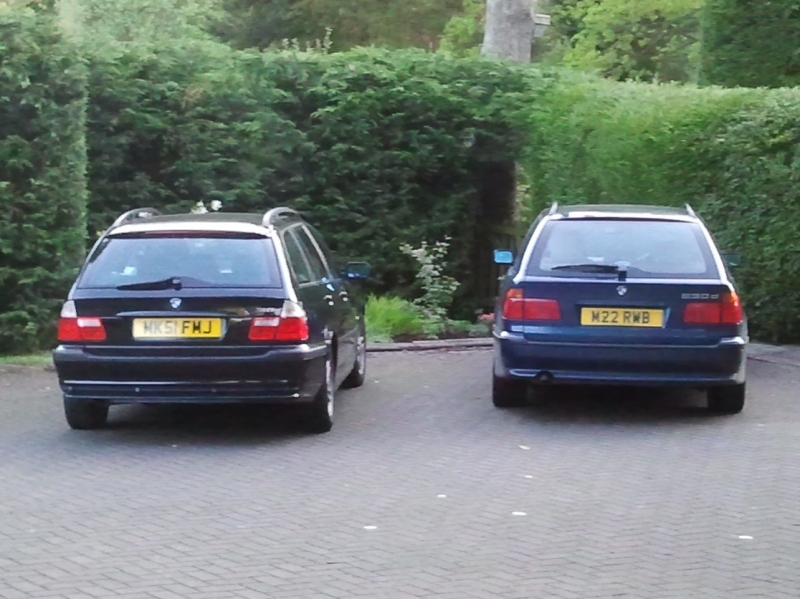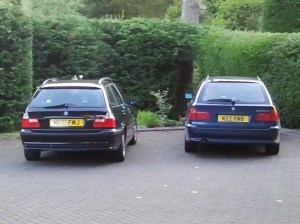I was out for a walk with the little one, when I saw this <-<
Here we have a 2011 BMW 3 series on the left, parked next to a 1994 BMW 5 series.
Not a fat lot of difference, is there?
Apart from the fact the BMW stylists obviously have no imagination whatsoever, they are almost exactly the same size as each other.
It’s a trend across the rest of the industry as well.
Take the VW Golf for instance. When it first came out it weighed well under 1,000 kgs. Now the damn things weigh 1,400 kgs if you get a top spec model, and laughably there’s even a bigger golf “plus” available!
Back in the day, the GTi version of the golf made do with just 108 bhp from a 1.6 motor. Doesn’t seem a lot now, but it was enough to get it to 60 mph in 9 seconds, which is still quite brisk. Later the engine size was increased to a 1.8 with the same power output, but due to the extra torque, it could then hit 60 in 8.3.
To do that in today’s golf, you need one with an engine size of at least 2 litres, or the turbo/supercharged 1.4, which puts out 170 bhp. Apparently this “meagre” power output is just enough to get it’s fat arse up to 60 mph in 8.4 seconds. Does your bum look big in this? Yes it does.
On the plus side, the new 1.4 has a combined cycle fuel figure of nearly 45 mpg, which is probably about 40 odd in the real world. A little more than the original GTi would have returned, but it does make you think how far it would go, if you took off the additional 500 kgs it’s put on over the years.
I understand some of the weight is down to safety standards, and I’m fine with that, but a lot of it is also down to more sound proofing for example, and assisted steering, neither of which are needed, and in my view actually compromise safety a little. Let me explain:
Cars are ever more cosseting and it’s removing drivers from genuine feedback. You can drive a modern car very quickly with little fuss, until you get caught out and then suddenly the speed you were travelling at seems an awful lot faster, but by then it’s too late.
 Take your every day car for example. It will almost certainly do 100 mph relatively easily.
Take your every day car for example. It will almost certainly do 100 mph relatively easily.
So does this -> But I tell you what – when it gets to 100 you KNOW about it. I’m not sure what it’s top speed is, I haven’t been there yet, and there’s a good chance I never will. My knuckles have gone white just thinking about it, but it is thrilling to drive even at sane speeds.
Then there’s the steering. If cars didn’t have such big, low profile tyres, and small steering wheels, you wouldn’t need power steering, and that would save weight in itself. You would then get more feedback, and you would “feel” the speed more.
An increased awareness of speed would lead to safer driving, especially in bad conditions. Take aquaplaning for example. With skinnier tyres and no assistance, you are more likely to feel the onset of planing, and it wouldn’t happen until a higher speed than wider tyres anyway. You also wouldn’t need such big wheels, saving more weight, all of it unsprung, so you could also improve both ride and handling – win/win.
And then there’s grip. It’s a myth that wider tyres give you more grip. They don’t – (look the physics up if you don’t believe me – Amontons’ Second Law). What wider tyres give you is more traction, which is why supercars have such wide rear tyres, but the fronts are always a lot narrower. In actual fact the latest Lambo, the aventador has 255’s up front, which are common fitment on much more down to earth cars, e.g. the BMW 320d Msport – a car with a 2 litre diesel engine.
What I’m saying is that less can often be more, and going bigger is not necessarily better, even for a speed freak like me.

